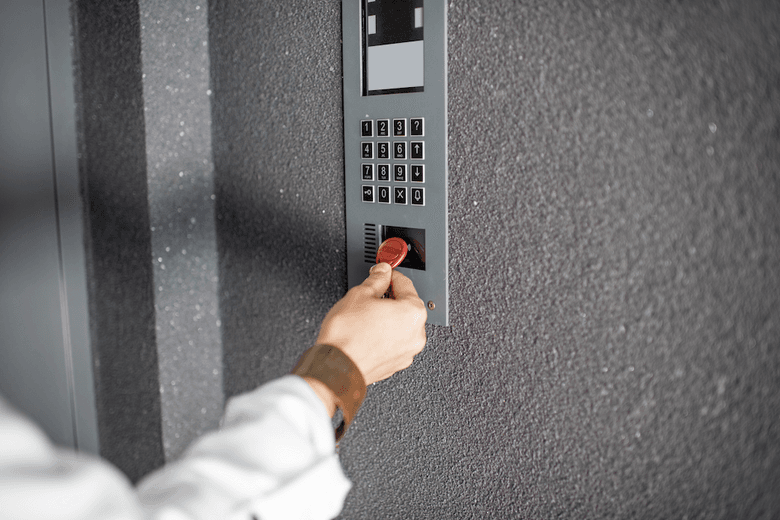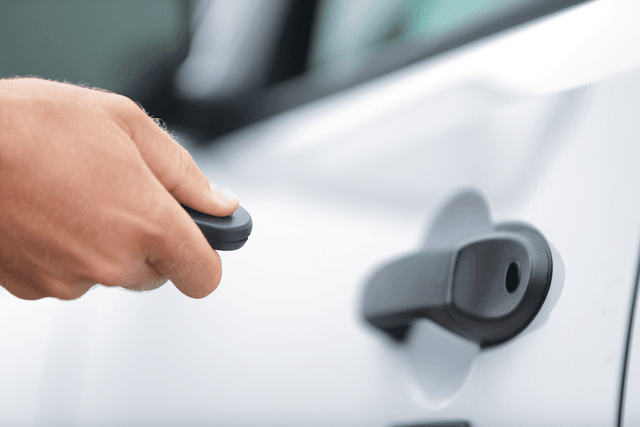Ever wondered how that tiny gadget dangling from your keychain works its magic to grant you secure access into your home, office, or car? We’ve got you covered! This complete guide to key fob entry systems will not only demystify the technology but also showcase the impressive security features, benefits, and innovations that lie within.
Table of contents
- Understanding Key Fob Entry Systems and Their Popularity
- How Key Fob Entry Systems Work: An Overview of the Technology
- Benefits of Key Fob Entry Systems: Security and Convenience
- Types of Key Fobs: Active, Passive, and Semi-Passive Systems
- Common Uses of Key Fob Entry Systems: Residential, Commercial, and Automotive Applications
- Key Fob Security Features: Encryption and Rolling Codes
- Understanding the Costs and Pricing Models for Key Fob Entry Systems
- Installation Process: Steps in Implementing a Key Fob Entry System
- Troubleshooting Common Key Fob Issues: Battery Replacement and Recalibration Tips
- The Future of Key Fob Technologies: Biometric Fobs and Smart Home Integration
- Conclusion: Making the Most of Key Fob Entry Systems for Your Security Needs
Suggested Posts:
- Best Apartment Security Systems
- The Best Apartment Intercom Systems
- The Evolution and Types of Apartment Entry Systems
- Key Fob Entry System for Commercial Buildings – Buyer’s Guide 2023
- Exploring the Modern Convenience of Key Fob Systems for Gym Owners
Understanding Key Fob Entry Systems and Their Popularity
In today’s fast-paced digital age, countless technological advancements have transformed the way we approach security and our access control systems. One astounding innovation interweaved into our daily lives is the key fob entry system. Here’s a sneak peek into what a key fob entry system entails, and why it’s found immense popularity in our world today:
- A compact and discreet security device using radio frequency identification (RFID) technology.
- Provides access to various facilities such as buildings, garages, or vehicles.
- Enhanced security features and added customization.
With convenience, security, and adaptability tightly knit into a pocket-sized package, key fob entry systems have become the go-to choice for small businesses with many seeking a dependable access control solution.
So, buckle up and join us on this journey as we unravel the intricate workings of key fob entry systems, exploring their versatile benefits, common applications, futuristic innovations, and how to make the most of them to fulfill your security needs.
How Key Fob Entry Systems Work: An Overview of the Technology
Before we dive headfirst into the world of key fob entry systems, it’s essential to understand the technology behind them. These small, unassuming devices rely on Radio Frequency Identification (RFID) technology to securely communicate with an access point like a front door lock or a car, granting access to authorized users.
Here’s a simplistic breakdown of how key fobs work:
- The key fob contains a microchip that stores a unique code, an antenna for transmitting the code, and a battery to power the device.
- The user activates the key fob (either actively through a button or passively through proximity), and a signal containing the code is sent to the access point.
- The access point verifies the code within the signal against its database of authorized codes through a secure authentication process.
- If the codes match, access is granted. If not, access is denied.
With the above operation in mind, the versatility of key fob entry systems becomes clear, as they can be used for countless applications in residential, commercial, and automotive settings.
Benefits of Key Fob Entry Systems: Security and Convenience
Key fob entry systems offer an attractive blend of security and convenience that have made them stand out among other various access control system options. Let’s take a look at how key fobs effortlessly manage this harmonious balance with:
Enhanced Security
- Key fobs employ sophisticated encryption methods, ensuring your data is protected and secure.
- Unique codes within key fobs make duplication or unauthorized access extremely challenging.
- Ability to remotely deactivate lost or stolen key fobs for added peace of mind.
Unparalleled Convenience
- Enjoy on-the-go access with the simple press of a button or proximity scan, without fumbling through your bag for hefty keys.
- Easily grant access permissions to specific individuals or areas for smoother, personalized control.
- Monitor access and remotely manage entry rights, all with just a few taps on your smart device.
By combining these security features and conveniences, key fob entry systems have become an indispensable part of modern living.
Types of Key Fobs: Active, Passive, and Semi-Passive Systems
As technology continues to evolve, so does the realm of key fob entry systems. Today, we can find various key fob types tailored to cater to our unique security requirements. Let’s explore the three main types: active, passive, and semi-passive.
- Active Key Fobs: Active systems necessitate user intervention to physically press a button on the fob to unlock the access point, like a door or vehicle ignition. These key fobs operate on radio frequencies and often work within a 100-foot range. Active key fobs also boast impressive battery life.
- Passive Key Fobs: These key fobs grant access without needing to press any buttons. They work through close proximity to the access point, and the fob automatically sends a signal to unlock it. Keep in mind that passive key fobs require more frequent battery replacements, as they’re constantly on standby.
- Semi-Passive Key Fobs: Striking a balance between active and passive systems, semi-passive key fobs come equipped with both auto-unlocking functionality and button-activated features. Battery life depends on the specific functions employed.
Understanding these key fob types enables you to choose the ideal system based on your security needs and preferences.
Common Uses of Key Fob Entry Systems: Residential, Commercial, and Automotive Applications
The adaptability and user-friendly nature of key fob entry systems have paved the way for them to be employed in various applications across different domains. Let’s examine some prevalent uses of key fobs in residential, commercial, and automotive settings.
Key Fob Entry Systems for Apartments: Security and Convenience Combined
Apartment living has never been so easy and secure, thanks to the advent of key fob entry systems. These highly advanced and customizable, fob access control devices offer a multitude of benefits for both residents and property managers:
- Enhanced Security: Say goodbye to the risk of unauthorized lock picking or duplicated keys, as key fobs use encrypted codes that can easily be deactivated if lost or stolen.
- Effortless Functionality: With a simple tap or swipe, gain access to your apartment or common facilities without the need for traditional keys.
- Personalized Access: Property managers can effortlessly grant or revoke access to specific areas, such as gyms or parking lots, on a per-resident basis.
- Smart Home Integration: Some key fob systems can even be integrated with smart home technologies, allowing you to control various aspects of your living space remotely.
Business Applications: Streamline Access Management with Key Fob Entry
Key fob entry systems provide a safer and more efficient workspace by simplifying access management for businesses. Employees can quickly and easily gain entry to authorized areas, and managers can track their access.
- Effortless Entry: Employees won’t need to fumble around with keys, as key fobs offer one-tap access to specific sections of the workspace.
- Enhanced Security: Key fobs use unique encrypted codes that are difficult to duplicate, minimizing the risk of unauthorized access.
- Easy Access Control: Administrators can easily grant or revoke employee access using easy-to-use software.
- Real-Time Monitoring: Keep track of employee entry and exit times to better understand workspace utilization.
Gym Access Made Easy: Key Fob Entry Systems for Fitness Centers
Fitness enthusiasts can now enjoy a hassle-free and secure gym experience, thanks to key fob entry systems. These innovative devices facilitate smooth and flexible access to fitness centers while ensuring security against unauthorized individuals.
- Effortless Entry: No need to scan membership cards; a simple tap on your key fob grants you access.
- 24/7 Access: Work out on your own schedule with round-the-clock access to your favorite fitness center.
- Enhanced Security: Key fob systems track entry, ensuring only enrolled members can access the gym facilities.
- Personalization: Key fob systems integrated with gym software offer personalized services such as tracking fitness progress and preferred class bookings.
Automotive Applications
- Enabling remote keyless entry for modern vehicles, offering users convenience and an added layer of security.
- Providing an array of additional features like remote start, panic buttons, and car locator functions.
With the ever-expanding scope and potential of key fob technology, we can expect even more exciting and revolutionary developments in the near future.
Key Fob Security Features: Encryption and Rolling Codes
With security being of utmost importance, let’s get into the other key fob access features that fortify key fob entry systems against potential threats:
- Encryption: Encryption is the keystone of key fob security. It scrambles the data transmitted between the key fob and access point using specific algorithms, rendering the information unreadable without the appropriate decryption key.
- Rolling Codes: This feature adds another layer of security by generating a new, unique code each time the key fob is used. This technique thwarts “code grabbing” and “replay attacks,” which are carried out by intruders seeking unauthorized entry.
Together, encryption and rolling codes create a robust security network that keeps you and your belongings safe and secure.
Understanding the Costs and Pricing Models for Key Fob Entry Systems
Before you invest in a key fob entry system, it’s crucial to consider the costs associated with purchasing and maintaining the device. Here’s a breakdown of what to expect:
- Initial Costs: This includes the hardware cost of the key fob system and professional installation fees. Keep in mind that higher-tier systems with advanced functionalities may be more expensive.
- Ongoing Maintenance: Factor in the cost of software updates, battery replacements, and access control management. Cloud-based access management plans might require a subscription fee.
Installation Process: Steps in Implementing a Key Fob Entry System
Setting up a key fob entry system might be seen as an intimidating endeavor at first glance, but with these step-by-step recommendations, you’ll be confidently installing your own key fob access system in no time:
- Choose the right system: Conduct thorough research, and select a suitable key fob entry system tailored for your security needs.
- Install hardware components: Follow the manufacturer’s guidelines in installing door readers, controllers, and electronic door locks to facilitate smooth system operation.
- Configure the software: Install and set up the provided key fob entry system software, customizing access settings as desired.
- Register key fobs: Assign unique identifiers to each key fob and register them within the system to enable usage tracking.
- Test everything: Once the system is fully operational, test all components to ensure seamless functioning and responsiveness.
By following these installation steps, you’ll have a fully functional key fob entry system adept at tackling your everyday security and remote management needs.
Troubleshooting Common Key Fob Issues: Battery Replacement and Recalibration Tips
Even the most advanced technologies may sporadically present us with unexpected hurdles. However, don’t fret! In this section, we’ll discuss some common key fob issues, accompanied by helpful tips and tricks to resolve them:
Battery Replacement Tips
- Monitor for signs of battery drainage, such as reduced signal strength or unresponsive buttons.
- Refer to your owner’s manual for the correct battery type and replacement procedure.
- Confirm proper battery positioning before insertion.
- Test the key fob after replacing the battery to ensure full functionality.
Recalibration Tips
- In cases where a key fob requires reprogramming or recalibration (usually after battery replacement), consult your owner’s manual for detailed instructions.
- Perform the necessary actions as instructed, such as inserting the key into the ignition, turning it to specific positions, and pressing buttons on the key fob.
By following the above suggestions, you can quickly resolve any key fob hiccups and continue enjoying the convenience and security they offer.
The Future of Key Fob Technologies: Biometric Fobs and Smart Home Integration
The world of key fob technology is ever-changing, and with emerging innovations like biometric authentication and smart home integration, the future looks exceptionally bright:
Biometric Fobs
- Biometric fobs take security to the next level by using fingerprint sensors for access control.
- Faster and more secure than traditional key fobs, as they rely on unique biometric signatures.
- Eliminates the worry of lost keys or unauthorized use of your key fob.
Smart Home Integration
- Key fob technology’s versatility lends itself well to integrating with smart home systems, offering a seamless user experience.
- A single key fob can control security systems, thermostats, lighting, and appliances.
- A unified solution for managing all smart home devices.
As we forge ahead into a future of biometric fobs and smart home integration, we can eagerly anticipate the incredible advancements in key fob technology and the unprecedented convenience and security they will offer.
Conclusion: Making the Most of Key Fob Entry Systems for Your Security Needs
In conclusion, it’s vital to recognize the dynamic advantages of key fob entry systems for your everyday access and security needs:
- Enhanced security through unique codes, encryption, and rolling codes.
- Unmatched convenience, offering quick and easy access.
- Customizable and scalable, growing alongside your evolving requirements.
We hope that with this comprehensive guide, you’ve discovered a deeper understanding of key fob entry systems and the incredible benefits they provide. So dive into the world of key fob entry systems, and indulge in the fantastic blend of security and convenience that awaits!
Have Questions?
Get in touch with our team to learn more about what Swiftlane can do for you.











